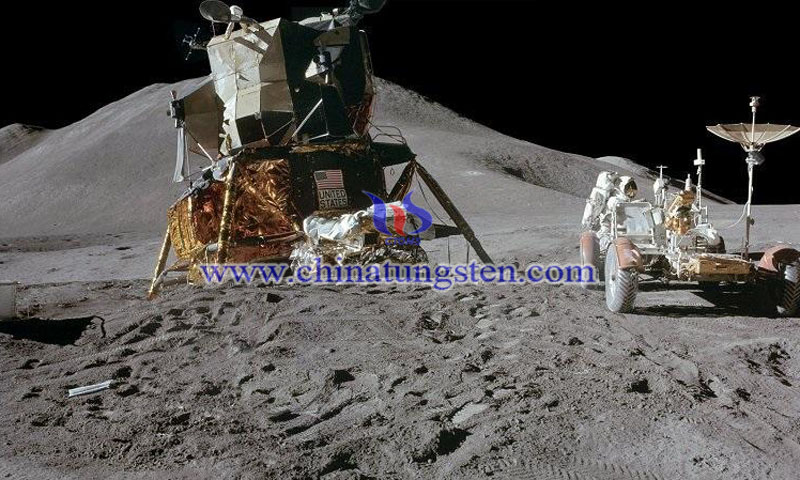Inference of Moon Formation From Hafnium and Tungsten
- Details
- Category: Tungsten's News
- Published on Thursday, 01 August 2019 11:00
After the formation of the solar system 4.56 billion years ago, the moon was formed about 4.51 billion years ago. Therefore, this new study confirms that the moon was much earlier than previously thought - early studies estimated that the moon formed about 150 million years after the formation of the solar system. To achieve these results, scientists analyzed the chemical composition of samples collected during the Apollo mission. The study, “Early Moon formation inferred from hafnium-tungsten systematic" was published in Nature Geoscience. scientists’ inference of moon formation from hafnium and tungsten about 4.51 billion years ago.
This study focused on the chemical characteristics of different types of lunar samples collected by different Apollo missions. "By comparing the relative amounts of different elements in rocks formed at different times, we can see how each sample relates to solidification in the lunar interior and in the magmatic ocean," said Dr Raúl Fonseca of Cologne University.
The moon may have formed after a huge collision between a Mars-sized planet and the early Earth. Over time, the Moon absorbs material clouds that have been bombed into Earth's orbit. The newborn moon is covered by magmatic oceans, which form different types of rocks when cooled. "These rocks record information about the formation of the moon, which can still be found on the surface of the moon today," said Dr. Maxwell Thiemens, a former Cologne University researcher and lead author of the study. Dr Peter Sprung, co-author of the study, added: "This observation is no longer possible on Earth because our planet has become geologically active over time. Therefore, the moon offers a unique opportunity to study the evolution of planets. "

The study of hafnium and tungsten on the moon is particularly important because they constitute the natural radioactive clock for the decay of the isotope hafnium-182 into tungsten-182. This radioactive decay lasted only the first 70 million years of the solar system. By combining the information of Hafnium and Tungsten measured in Apollo samples with the information of laboratory experiments, it was found that the moon began to solidify as early as 50 million years after the formation of the solar system. "This age information means that any significant impact must occur before that time, which answers the heated debate in the scientific community about when the moon formed," adds Professor Dr Carsten Münker from the UoC’s Institute of Geology and Mineralogy.
Maxwell Thiemens concluded: "The first step in another world 50 years ago produced samples that let us know the time and evolution of the moon. Since the formation of the moon is the last major planetary event after the formation of the earth, the age of the moon also provides the lowest age for the earth.

- Tungsten Manufacturer & Supplier, Chinatungsten Online: www.chinatungsten.com
- Tungsten News & Prices of China Tungsten Industry Association: www.ctia.com.cn
- Molybdenum News & Price: news.molybdenum.com.cn
- Tel.: 86 592 5129696; Fax: 86 592 5129797; Email: sales@chinatungsten.com



 sales@chinatungsten.com
sales@chinatungsten.com